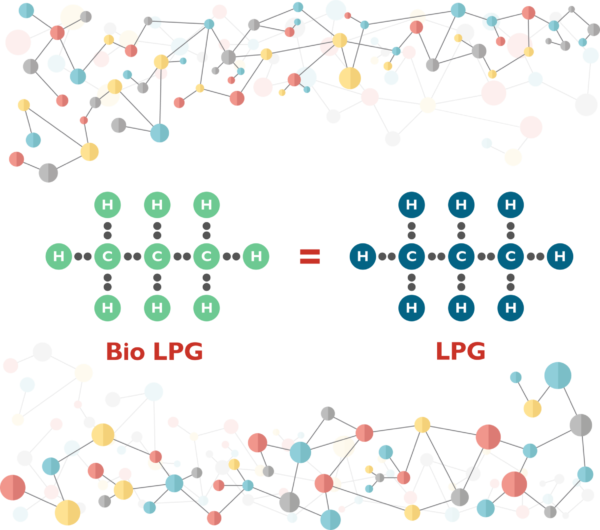BioLPG is a product with some distinctive qualities, a “green” solution that fits right in with our ever-growing environmental awareness. Indeed, renewable LPG is not produced entirely from fossil fuels (petroleum) but also from biological sources. For example, it can result from the gaseous conversion of organic waste (landfills) or from sustainably sourced residues and materials (biomass). Equally as important is the potential for conventional refineries to co-process fossil fuels with bio-fuels. A major strong point is that renewable LPG is chemically identical to LPG and thus compatible with all products and technologies that use LPG, without compromising performance in any way whatsoever. This gas truly has “a greener soul”, as it embodies the ideals of a circular economy.
Switch to bioLPG and make a difference!
Why would industrial, commercial and agricultural businesses switch to LPG and bioLPG?
There are 3 main benefits of these alternative fuels that should serve to convince businesses to switch away from heating oil and coal.
ECO-FRIENDLY
LPG and bioLPG can play a key role in fighting the air pollution issue. In fact, LPG emits 84% less Nitrogen Oxide than oil and bioLPG is a clean burning fuel with a negligible impact on the environment.
PRACTICAL
LPG and bioLPG are easily stored and transported. They need more compact storage vessels, which don’t need to be contained in a protected area, and they can be transported across the continent, which means they can also reach the off gas-grid rural areas.
VALUABLE
The transition to bioLPG systems has no implications on the changing of equipment or infrastructure, but it would mean a lot in terms of “company value”. Today, in fact, the market tendency is to reward “green” initiatives and sustainable production processes. Fuel switching is one of them and it gives a company the chance to be more competitive and more valued by consumers, while saving the planet.

Global trends
Global production of renewable LPG is currently at about 200 tons per year, which is just under 0,1% of the global market for LPG. About half of renewable LPG is branded as such for sale, whereas the other half is consumed as fuel gas or as LPG. Production of renewable propane increased by some 50% in 2018, and it is looking like production is set to really take off in the coming years.
Renewable LPG could play a pivotal role in the future, especially if you consider Europe’s increasingly strong policy push towards decarbonization. That makes both LPG and bioLPG even more attractive as alternatives to carbon-intensive fossil fuels. No wonder, then, that international gas associations and we at the Cavagna Group are watching the growth of renewable LPG with extreme interest.


